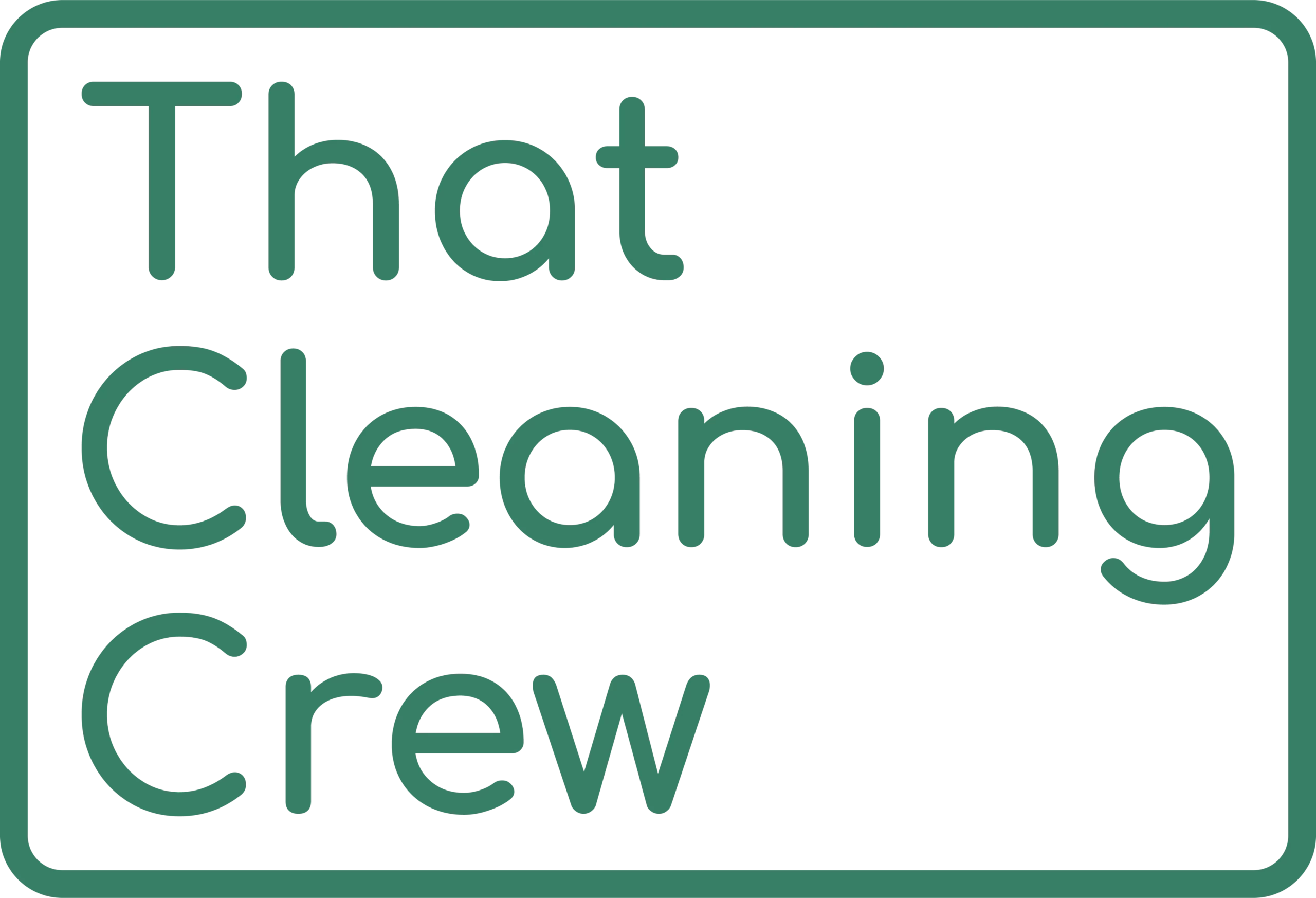It’s one thing to have the cleaners come through. It’s another thing entirely to walk into your office, your shop, or your clinic on a Monday morning and feel that deep-down, everything-in-its-place kind of clean.
You know the feeling, right? The air seems fresher. The floors gleam just right under the lights. It’s the kind of professional clean that makes your team feel genuinely valued and tells every single visitor, ‘we’ve got our act together here’.
But getting that level of polish isn't magic. It’s about having a system… a really, really good system. It’s about not missing the small details that build up to make a huge impression.
Think of it like a recipe for a perfect cake. You can't just throw flour and sugar in a bowl and hope for the best. You need the exact measurements, the right steps, and you need to do them in the correct order. That’s exactly what a solid commercial cleaning checklist provides for your workspace. It’s your detailed recipe for a consistently brilliant, healthy, and welcoming environment.
In this guide, we're going to break down that recipe, piece by piece. We’ll go room by room and task by task, from the front door to the back office, so you know exactly what 'spotless' should look and feel like. This isn’t just about tidying up. It's about setting a standard of excellence that everyone notices. Let's get into it.
1. Reception and Entrance Area Cleaning
Your reception area is more than just an entryway. It’s the very first physical interaction anyone has with your brand. Think of it as your business’s handshake. A dusty desk, a streaky glass door, or a muddy floor can communicate neglect before you’ve even had a chance to say hello. This is why it’s a non-negotiable part of any robust commercial cleaning checklist.
This whole task involves the systematic cleaning and upkeep of all your front-facing spaces. This means everything from the lobby and reception counter to the entrance doors and waiting area furniture. The goal here is to maintain a consistently pristine and professional appearance that gives visitors, clients, and your own team a shot of confidence from the moment they step inside.
Why It's Your First Priority
The entrance sets the standard for the rest of your place. A well-maintained reception suggests attention to detail, professionalism, and care, while a neglected one can signal the complete opposite. For example, a big corporate headquarters might schedule hourly entrance mat changes during rainy seasons to stop water and dirt being tracked in. Just a small thing, but it makes a difference. Similarly, a medical facility will use hospital-grade disinfectants on reception counters every hour or two to ensure patient safety and show they're serious about hygiene.
To keep this critical space in top condition, you've got to balance deep cleaning with frequent touch-ups. The following infographic breaks down the ideal schedule for maintaining a spotless entrance.
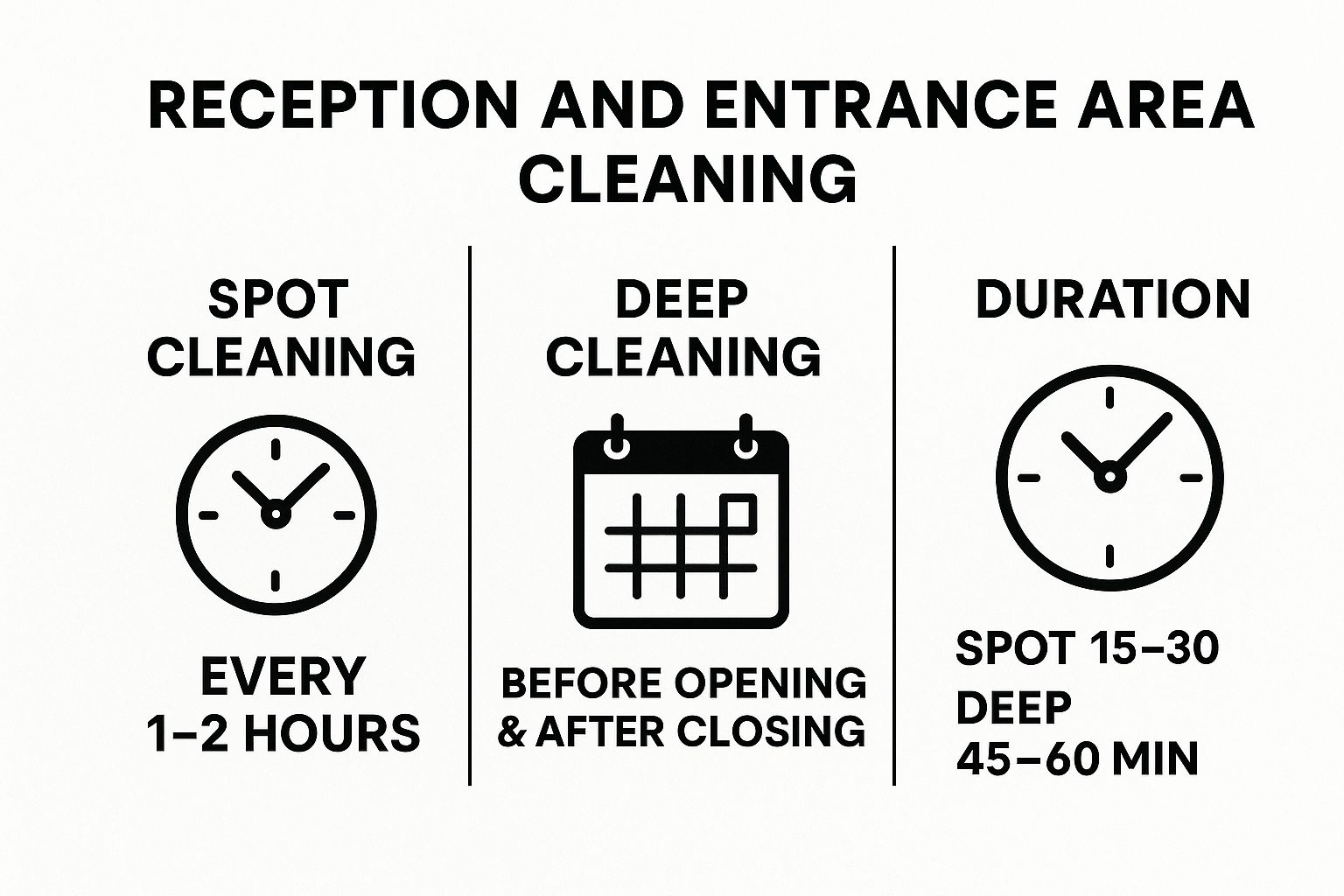
This schedule shows that keeping a flawless entrance requires a constant but manageable effort, mixing quick spot cleans with more thorough daily routines.
Practical Tips for a Flawless Welcome
To make your entrance area shine, focus on these actionable steps:
- Schedule Smart: Get the deep cleaning done, like floor buffing or intensive vacuuming, before your business opens or after it closes. During work hours, just stick to quick, discreet spot cleaning to keep disruption to a minimum.
- Invest in Quality Matting: Use commercial-grade entrance mats that stretch at least 3.5 to 4.5 metres. This simple step can trap up to 85% of outside dirt, dust, and moisture before it ever hits your main floors. It's a game-changer.
- Be Ready for Anything: Keep a small, dedicated cleaning kit in a nearby closet. Stock it with glass cleaner, microfibre cloths, a small dustpan, and disinfectant wipes for immediate response to spills or scuffs.
- Use the Right Tools: Always use streak-free glass cleaners and high-quality microfibre cloths on windows and glass doors. This is one of those small details that makes a massive professional impact.
2. Restroom Sanitization and Maintenance
If the reception is your business's handshake, then the restroom is its report card on health and hygiene. Let's face it. Nothing leaves a more lasting… and often negative… impression than a poorly maintained bathroom. It’s a space that’s intensely personal and its condition speaks volumes about how much you value the wellbeing of your staff and visitors. That’s why it’s a non-negotiable cornerstone of any serious commercial cleaning checklist.
This task goes way beyond a quick wipe-down and a mop. It’s about the comprehensive cleaning, disinfection, and consistent restocking of all your bathroom facilities. From sanitising high-touch surfaces like door handles and taps to deep cleaning fixtures and ensuring supplies are always available, the aim is to create a space that isn't just visibly clean, but hygienically safe.
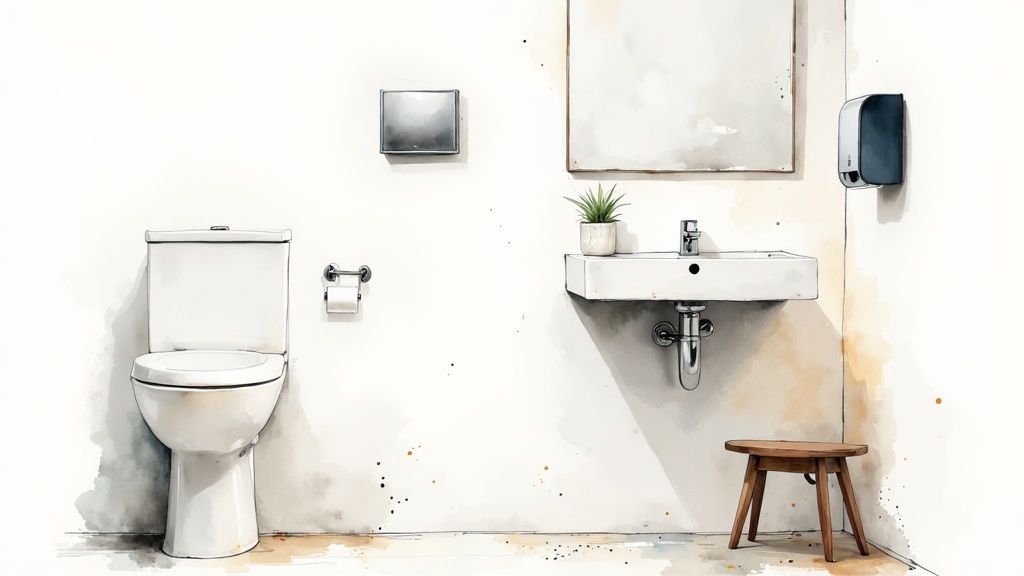
Why It's a Top Priority
The state of your restrooms directly impacts employee health, morale, and how clients see your whole operation. A clean restroom minimises the spread of germs, which reduces sick days, while a neglected one can become a major source of workplace complaints. For example, high-traffic venues like airports often have dedicated attendants for continuous cleaning, making sure standards never slip. Similarly, restaurants must maintain hourly checks to comply with strict health department regulations, proving that restroom hygiene is integral to their business licence.
To maintain these critical standards, a combination of frequent checks and periodic deep cleaning is essential. It’s a constant effort, but one that pays huge dividends in perception and safety.
Practical Tips for Pristine Restrooms
To ensure your facilities are always up to scratch, focus on these actionable steps:
- Clean Systematically: Always work from the top down (mirrors, then counters, then toilets) and from the cleanest areas to the dirtiest (sinks before toilets). This stops you from re-soiling already cleaned surfaces. Makes sense, doesn't it?
- Prevent Cross-Contamination: Use a colour-coded cloth system. For instance, blue for mirrors, yellow for sinks, and red for toilets. This simple step is a professional standard that stops the spread of germs from one surface to another.
- Respect Dwell Time: Don't just spray and wipe. Commercial-grade disinfectants need to sit on a surface for a specific period, usually 3 to 10 minutes, to effectively kill germs. Always read the label.
- Restock First: Before you even start cleaning, check and replenish all supplies like toilet paper, paper towels, and soap. This ensures you don’t have to re-enter the cleaned space with bulky boxes. A persistent issue like mould growth can also undermine even the best cleaning efforts; exploring how to remove mould from a bathroom is a key part of long-term maintenance.
3. Floor Care and Maintenance
The condition of your floors says a lot about your business. It’s a foundational element of your facility’s hygiene and aesthetics. Scuffed tiles, stained carpets, or dull hardwood can make an otherwise clean space feel uncared for and unprofessional. Consistent floor care isn’t just about looking good; it's a critical safety measure that protects your staff and visitors while preserving a very expensive asset.
This task involves tailored cleaning procedures for all your floor types, from daily vacuuming and mopping to less frequent deep cleans like stripping, waxing, buffing, and professional carpet extraction. The goal is to create a comprehensive floor maintenance program that extends the life of your flooring, ensures a safe environment, and consistently presents your business in the best possible light.
Why It's Foundational to Your Facility's Health
Your floors put up with the most traffic and, because of that, they accumulate the most dirt, germs, and wear. A systematic approach to floor care prevents slip hazards, reduces the spread of contaminants, and helps you avoid costly premature replacements. For instance, many healthcare facilities now use advanced microfibre mopping systems to slash water and chemical usage while trapping more bacteria. Likewise, large retail stores often use automated floor scrubbers overnight to ensure a clean, safe shopping environment for customers the next morning.
A great floor care plan balances daily upkeep with periodic deep cleaning. It’s about being proactive, not reactive, to keep them in top shape.
The right maintenance schedule ensures your floors can handle daily wear and tear without showing their age.
Practical Tips for Flawless Floors
To keep your floors in pristine condition, focus on these actionable steps:
- Vacuum Strategically: High-traffic carpeted areas need daily vacuuming, while moderate-traffic zones can be done three times a week. This simple step stops dirt from getting ground deep into the carpet fibres.
- Sweep Before You Mop: Always sweep or dry mop hard surfaces before you introduce water. This stops you from turning dust and debris into a muddy slurry that you just spread around. It's a rookie mistake we want to avoid.
- Use Quality Mats: Placing high-quality walk-off mats at all entrances can capture up to 80% of incoming dirt before it ever hits your main floors. This is your first line of defence.
- Schedule Deep Cleans: Plan for periodic deep cleaning based on traffic. For hard floors, this means stripping and recoating the finish every 6-12 months. For carpets, aim for a professional extraction every 12-18 months, or even quarterly for the busiest spots.
- Prioritise Safety: Always use "wet floor" signs and safety barriers during and after mopping to prevent slips and falls. Make sure the floor is completely dry before you take them away.
4. Workspace and Desk Area Cleaning
Your employees' desks are the heart of daily operations, but they're also major hotspots for germs and clutter. Think about it. Keyboards, mice, phones, and desk surfaces are touched hundreds of times a day. A clean, organised workspace isn't just about appearances; it's a critical component of employee health, morale, and even focus. That's why it's a non-negotiable part of any modern commercial cleaning checklist.
This task involves the careful cleaning and sanitisation of individual workstations, cubicles, and personal work areas. The goal is to create a hygienic and orderly environment that supports wellbeing, all while respecting employees' personal space. It’s a bit of a balancing act that, when you get it right, shows your team you genuinely care about their health and comfort.
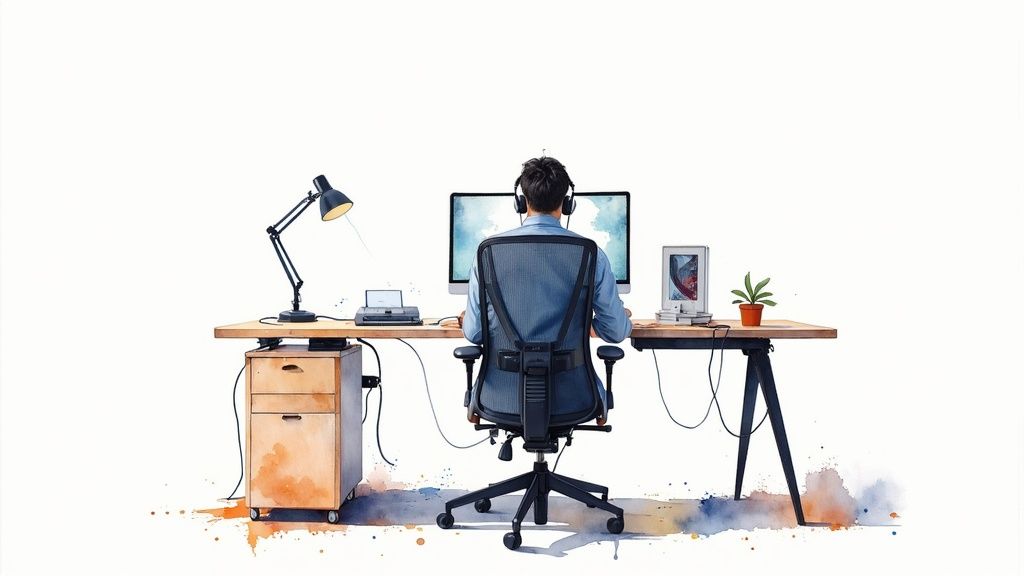
Why It's a Top Priority
A clean desk directly impacts how people feel and perform at work. In our post-pandemic world, sanitising high-touch surfaces isn't just a preference. It’s an expectation that provides peace of mind. For example, a busy call centre might sanitise headsets and phones between every shift to prevent germ transmission. Tech companies, on the other hand, might use UV-C sanitising wands on shared keyboards and equipment after hours.
Maintaining this standard of cleanliness boosts confidence and can even lead to fewer sick days. In fact, professional cleaning has a measurable effect on team efficiency. You can learn more about the impact of cleaning services on workplace productivity to see how a small investment can deliver significant returns. It all comes down to creating a space where people feel safe and valued.
Practical Tips for a Spotless Workspace
To keep employee work areas clean without overstepping boundaries, focus on these actionable steps:
- Establish Clear Protocols: Create a "clean desk" policy that outlines what cleaners can touch or move. Communicate this clearly so employees know what to expect and can secure their personal items.
- Use Colour-Coded Cloths: Assign different coloured microfibre cloths for different tasks. For instance, use blue for surfaces like desks and filing cabinets, and green specifically for electronics to prevent cross-contamination.
- Clean Electronics Safely: Never spray liquids directly onto keyboards or monitors. That’s a fast track to a broken computer. Lightly dampen a microfibre cloth with an appropriate cleaner and then wipe the device. Use compressed air to dislodge debris from keyboards first.
- Respect Dwell Times: When you're using hospital-grade disinfectants, especially on high-touch points like phones and door handles, make sure you let the product sit for its recommended "dwell time" to ensure it effectively kills germs.
5. Window and Glass Surface Cleaning
Streaky, grimy windows and glass partitions do more than just block the view. They broadcast a message of carelessness. Clear, sparkling glass, on the other hand, maximises natural light, makes your space look better, and reflects a high standard of professionalism. This is why dedicated glass cleaning is an essential part of any comprehensive commercial cleaning checklist.
This task involves the specialised cleaning of every glass surface in your facility. We're talking about everything from external windows and glass doors to internal partitions, mirrors, and even retail display cases. The goal is to achieve a flawless, streak-free finish that not only looks pristine but also ensures maximum light comes through, making your entire space feel brighter and more inviting.
Why It's a Top Priority
Clean glass surfaces are fundamental to brand image and occupant well-being. A neglected window can make an otherwise clean space feel dirty, while spotless glass creates an immediate impression of quality and attention to detail. For instance, high-end retailers like Apple Store locations maintain immaculate floor-to-ceiling glass daily to support their premium brand image. Similarly, a high-rise office building might hire a specialised window cleaning service quarterly to maintain its prestigious corporate facade and ensure a pleasant work environment for tenants.
To keep your glass surfaces in prime condition, you need the right techniques and a consistent schedule. It's not just about wiping them down; it's about a professional approach that delivers lasting clarity.
Practical Tips for a Flawless Finish
To make every glass surface in your facility shine, focus on these actionable steps:
- Clean on Cloudy Days: Direct sunlight can cause your cleaning solution to evaporate too quickly, leaving behind stubborn streaks. An overcast day is your best friend for a perfect, streak-free finish.
- Master the Squeegee: For a professional outcome, use a high-quality squeegee in a continuous "S" pattern. This technique pulls the water and dirt away effectively without leaving lines. Remember to wipe the blade after each pass.
- Work from Top to Bottom: Always start cleaning from the top of the glass and work your way down. This simple rule stops drips from ruining your freshly cleaned sections below.
- Invest in the Right Tools: A worn-out squeegee rubber is a primary cause of streaks. Replace it regularly. Using fresh, high-quality microfibre cloths to detail the edges and corners will also give you that crisp, professional look.
6. Break Room and Kitchen Area Maintenance
The office break room or kitchen is much more than a place to grab a coffee. It's the social heart of your workplace, where your team recharges, connects, and steps away from their desks. But because it’s a high-traffic, communal area involving food, it can quickly become a hotspot for germs, odours, and general messiness if it’s not managed properly.
This task covers the complete cleaning and sanitisation of all employee break rooms, kitchens, and food preparation areas. It involves everything from wiping down countertops and cleaning appliances to managing waste and making sure food safety standards are met. The goal is to create a hygienic, pleasant, and safe environment that supports employee wellbeing and morale.
Why It's Critical for Staff Health
A neglected kitchen is a direct threat to your team’s health. Crumbs attract pests, spills breed bacteria, and an overflowing bin creates unpleasant odours that can spread through the whole office. This is why a detailed break room cleaning protocol is a non-negotiable part of any serious commercial cleaning checklist. For instance, a call centre might schedule a full break room reset between major shift changes to ensure every group of employees gets a clean space. Similarly, many corporate offices now schedule mandatory monthly fridge clean-outs, with plenty of notice, to stop forgotten food from becoming a science experiment.
Maintaining these areas shows your employees you care about their health and provides a space where they can genuinely relax. A consistently clean kitchen helps prevent the spread of illness, boosts morale, and reinforces a company culture of respect and professionalism.
Practical Tips for a Spotless Break Room
To keep your kitchen and break areas safe and inviting, focus on these actionable steps:
- Implement a Fridge Policy: Clean refrigerators weekly by wiping down shelves and removing spills. Schedule a monthly deep clean and "purge," letting staff know in advance to remove personal items. This keeps the appliance clean and usable for everyone.
- Tackle the Microwave: Don't let food splatters become permanent fixtures. A simple trick is to heat a bowl of water with a bit of baking soda for two minutes. The steam will loosen grime, making it easy to wipe clean with a cloth.
- Descale Your Appliances: Coffee makers and kettles can build up mineral deposits. Descale them monthly by running a cycle with a vinegar-and-water solution, followed by two cycles of fresh water to rinse.
- Sanitise Beyond the Surface: Don't just replace the bin liner; sanitise the entire bin, inside and out, to eliminate lingering odours and bacteria. Always clean countertops with a food-safe sanitiser after removing visible dirt.
- Use Designated Supplies: To prevent cross-contamination, use separate, colour-coded cleaning supplies (cloths, sponges, brushes) that are designated only for food areas.
7. Trash Removal and Recycling Management
Managing waste isn’t just about taking out the bins. It’s a critical system that impacts your facility's health, environmental footprint, and even your brand's reputation. Think of it as your building's circulatory system. If it gets clogged or isn't managed correctly, problems like pests, bad odours, and safety hazards quickly follow. This is why a systematic approach to trash and recycling is a cornerstone of any professional commercial cleaning checklist.
This task covers the entire lifecycle of waste in your facility. It involves the consistent collection, sorting, and disposal of all waste streams, from general rubbish to complex recycling programs. The goal is to create a clean, safe, and efficient process that keeps your premises sanitary, supports sustainability goals, and ensures you're meeting local council regulations.
Why It's a Foundational Task
Ineffective waste management sends a clear message of disorganisation and neglect. Overflowing bins and contaminated recycling are not only unsightly but can attract pests and create significant health risks. On the other hand, a well-organised system demonstrates responsibility and operational excellence. For instance, many corporate campuses now use sensors in their bins to signal when they're full, optimising collection routes and preventing overflow. That’s pretty cool. Similarly, hospitals implement strict colour-coded waste systems to safely segregate general, clinical, and hazardous materials, which is non-negotiable for compliance and safety.
Properly managing waste is a daily discipline that protects your people and your brand. A disorganised approach can undermine all your other cleaning efforts, making it an essential, non-negotiable priority.
Practical Tips for Efficient Waste Management
To streamline your waste removal and recycling processes, focus on these key steps:
- Establish a Strict Schedule: Collect rubbish daily, at a minimum, to prevent overflow, manage odours, and deter pests. High-traffic areas like kitchens or break rooms may need more frequent attention.
- Make Recycling Foolproof: Use clear liners in recycling bins. This simple change lets your cleaning team quickly spot contamination (like food waste in a paper bin) before it ruins an entire batch.
- Prioritise Hygiene and Safety: Always wear appropriate PPE, including gloves and closed-toe shoes. It's also crucial to wash hands thoroughly after handling waste, even when you've worn gloves, to prevent cross-contamination.
- Secure and Sanitise: Ensure all bags are tied securely to prevent leaks during transport. Bins should be sanitised at least weekly, or immediately if they become visibly soiled, to eliminate bacteria and odours.
- Don't Skip the Details: Place a new liner in the bin immediately after removing a full one. This stops people from throwing rubbish into a bare, unsanitary bin and makes the next collection cleaner and easier.
8. Dusting and Surface Disinfection
Dust might seem like a small nuisance, but in a commercial setting, it's a silent threat. It’s made up of allergens, pollutants, and skin cells that can harm air quality, damage sensitive electronics, and create a generally unkempt appearance. Dusting and surface disinfection is the one-two punch that not only removes this threat but also neutralises harmful pathogens on the surfaces we touch most often.
This is the systematic process of trapping and removing dust from every surface, from the top of a bookshelf down to the baseboards, then applying an EPA-approved disinfectant to high-touch points. The goal isn't just to make things look clean. It's to create a healthier environment for everyone who walks through your doors, reducing the risk of illness and allergic reactions.
Why It's a Health and Safety Cornerstone
A dusty surface is more than an eyesore; it's a health risk. Similarly, a contaminated door handle can be a primary way to transmit viruses. This task is fundamental to any commercial cleaning checklist because it directly impacts employee wellbeing and operational continuity. For example, data centres follow strict dust control protocols to prevent equipment from overheating and failing. In contrast, schools often increase the disinfection of high-touch surfaces, like doorknobs and desks, to every two hours during flu season to minimise student and staff absences.
This process is about being proactive, not reactive. You're removing contaminants before they can cause a problem, which is why a consistent, methodical approach is so crucial.
Practical Tips for a Dust-Free, Germ-Free Space
To master dusting and disinfection, focus on these actionable steps:
- Work from Top to Bottom: Always start with the highest surfaces, like light fixtures and the tops of cabinets. This ensures any dislodged dust falls onto areas you haven't cleaned yet, so you can capture it all when you vacuum or mop the floors last.
- Embrace Microfibre: Ditch the feather dusters. They just flick dust into the air. High-quality microfibre cloths have a static charge that attracts and traps dust particles, removing them completely.
- Respect Dwell Time: Disinfectant isn't magic; it needs time to work. Always check the product label for the required "dwell time" (usually 3 to 10 minutes) and make sure the surface stays wet for that entire period to effectively kill germs.
- Create a Consistent Path: To avoid missing spots, clean a room in a consistent pattern, like working clockwise from the door. This turns a complex task into a simple, repeatable process that guarantees thorough coverage.
Commercial Cleaning Task Comparison Matrix
| Cleaning Task | Implementation Complexity 🔄 | Resource Requirements ⚡ | Expected Outcomes 📊 | Ideal Use Cases 💡 | Key Advantages ⭐ |
|---|---|---|---|---|---|
| Reception and Entrance Area Cleaning | Medium – frequent attention, ongoing monitoring | Moderate – staff for multiple daily spot cleanings, commercial mats, cleaning supplies | High visibility cleanliness, positive first impressions | High-traffic entrances, corporate lobbies, hotels | Enhances brand image, controls foot traffic dirt |
| Restroom Sanitization and Maintenance | High – detailed disinfection, chemical use | High – trained staff, specialized chemicals, supply restocking | Reduces disease spread, improves employee health | Offices, restaurants, hospitals, airports | Critical for health, meets regulatory standards |
| Floor Care and Maintenance | High – specialized methods per floor type, equipment intensive | High – vacuum, scrubbers, buffers, cleaning solutions | Prolongs floor lifespan, enhances safety, appearance | Retail, healthcare, schools, offices | Prevents slip hazards, allergy reduction |
| Workspace and Desk Area Cleaning | Medium – careful personal space cleaning | Moderate – disinfectants, microfiber cloths, training | Reduces cross-contamination, improves productivity | Offices, call centers, co-working spaces | Supports employee wellbeing, reduces allergens |
| Window and Glass Surface Cleaning | Medium-High – requires technique, safety for heights | Moderate – squeegees, ladders, cleaning solutions, safety gear | Improves lighting, enhances curb appeal | High-rise buildings, retail, hospitals | Increases natural light, preserves glass clarity |
| Break Room and Kitchen Area Maintenance | Medium – food-safe cleaning, appliance focus | Moderate – food-safe products, cleaning tools, coordination | Prevents foodborne illness, controls pests | Employee kitchens, cafeterias, break rooms | Supports health, reduces odors and infestations |
| Trash Removal and Recycling Management | Low-Medium – routine, physical labor | Low – gloves, bags, signage, coordination with haulers | Maintains sanitation, supports sustainability | All commercial facilities | Prevents pests, controls odors, promotes recycling |
| Dusting and Surface Disinfection | Medium – thorough, requires technique | Moderate – microfiber cloths, EPA disinfectants | Improves air quality, reduces allergens | Offices, healthcare, schools, museums | Breaks disease chains, extends equipment life |
Putting it All Together: From Checklist to Reality
So, we’ve travelled through every corner of your commercial space, from the first impression at the front door to the high-touch surfaces in the break room. We’ve broken down the big, daunting job of ‘keeping things clean’ into a series of clear, manageable tasks. And now, you’re armed with a comprehensive commercial cleaning checklist that covers everything from daily must-dos to those crucial periodic deep cleans.
But what does it all really mean? A checklist, at its best, isn't just a list of chores. It's a tool for transformation. It’s the framework that turns your intention of a clean, healthy, and professional environment into a consistent, measurable reality. It’s about building a standard.
Think about it. When you methodically clean reception areas, you’re not just wiping down counters; you're reinforcing your brand’s professionalism from the moment someone walks in. When you implement a detailed restroom sanitisation schedule, you’re directly investing in the health and wellbeing of your staff and visitors, reducing sick days and creating a more comfortable space for everyone. It’s more than just cleaning… it’s a form of communication. It tells your team, “We care about your health.” It tells your clients, “We are detail-oriented and professional.”
From Paper to Practice: Making Your Checklist Work
Having the perfect checklist is the first step. The real magic, though, happens in the execution. This is where many businesses, even with the best intentions, can stumble. Consistent, high-quality cleaning requires three key ingredients:
- Time: Your team is already focused on their core jobs. Adding a detailed cleaning regimen on top can stretch resources thin, leading to tasks being rushed or skipped entirely.
- Expertise: Do you know which cleaning agents are safe for your specific floor type? Or the most effective way to disinfect a high-traffic kitchen without leaving harmful residues? Professional cleaners bring specialised knowledge that ensures the job is done right and safely.
- Equipment: Commercial-grade vacuums, floor polishers, and specialised disinfection tools deliver a level of clean that standard equipment simply can’t match.
A great commercial cleaning checklist acts as your blueprint. It sets the standard. But achieving that standard day in and day out is where partnering with a professional service can be a game-changer. It takes the operational burden off your shoulders, freeing you and your team to focus on what you do best.
A checklist isn’t about control; it’s about clarity. It provides a shared understanding of what ‘clean’ truly means for your facility, ensuring everyone is working towards the same exceptional standard.
Ultimately, the goal is to create an environment that doesn't just look clean but feels clean. A space that boosts morale, enhances productivity, and leaves a lasting positive impression. This detailed checklist is your roadmap to get there. Whether you tackle it in-house or decide to bring in experts, you now have a clear vision of what excellence looks like. You can move beyond reactive cleaning and establish a proactive system that protects your people, your property, and your reputation. The journey from a simple list to a thriving, spotless reality is within your reach.
At That Cleaning Crew, this isn't just a theoretical exercise; this is the operational blueprint we use every day to deliver exceptional results for businesses across Sydney, Newcastle, and the Hunter Valley. If you're ready to see this level of detail and dedication in your own space without the management headache, let’s have a chat. Visit us at That Cleaning Crew to learn how we turn your checklist into our commitment.
